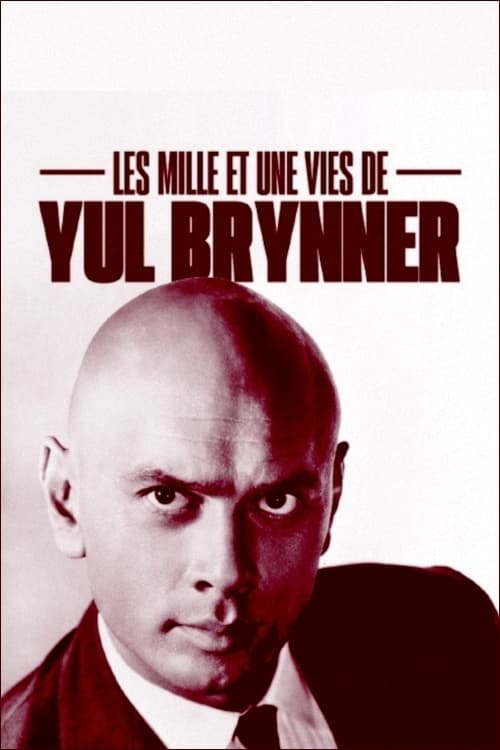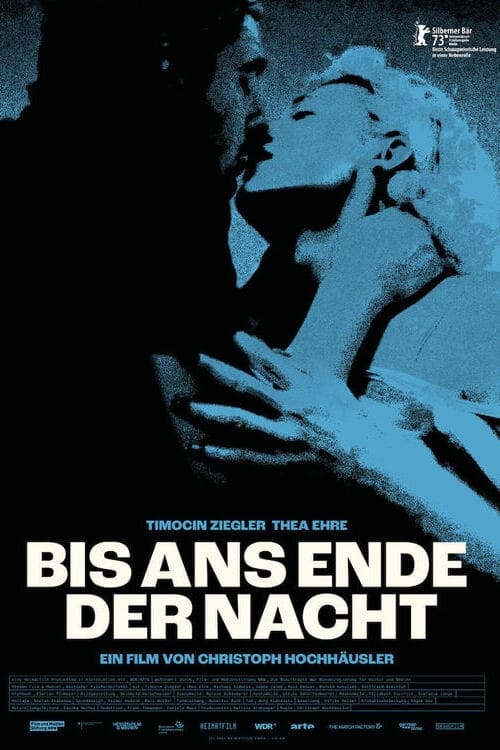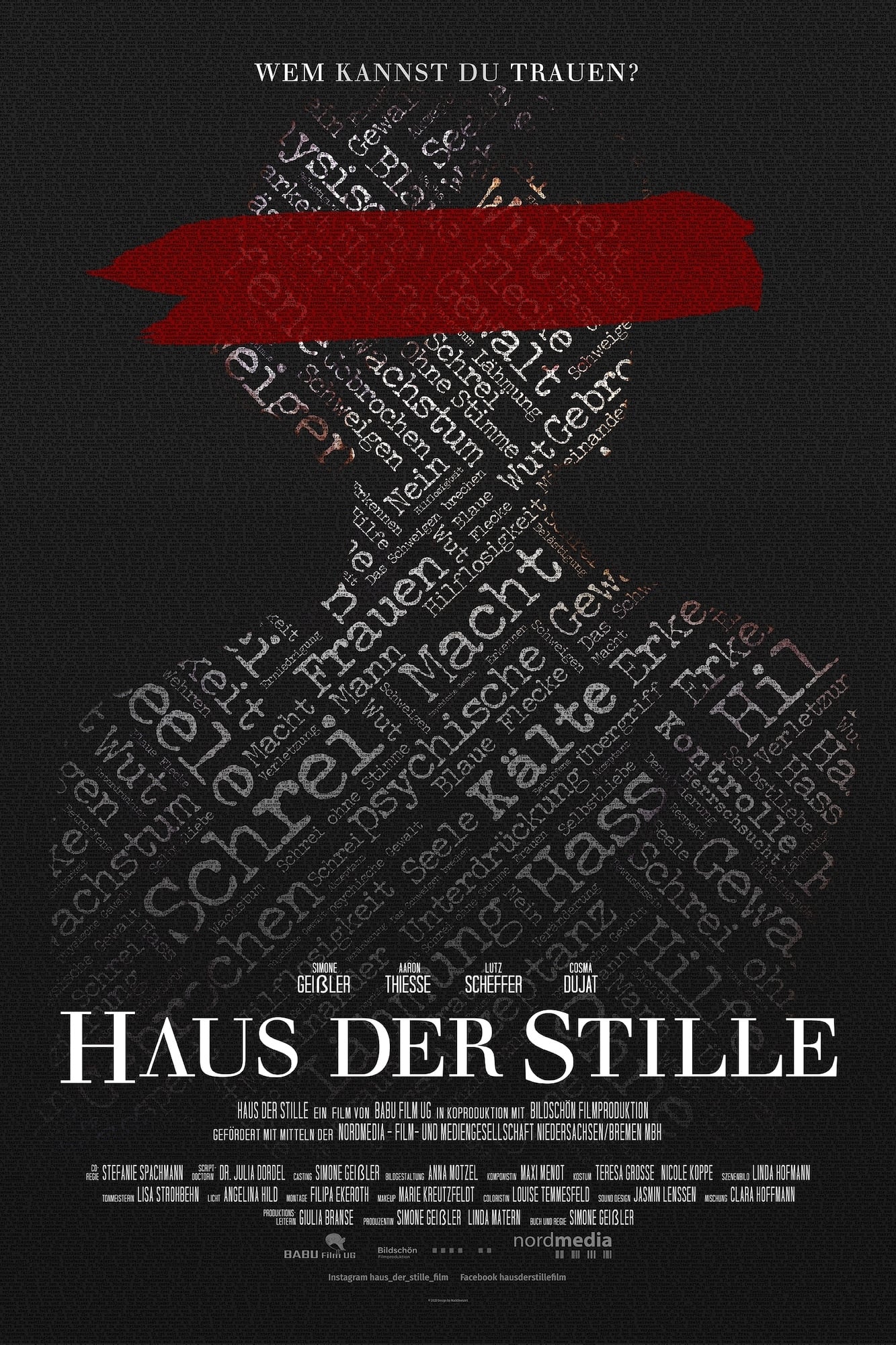![Tuscan Guitar Duo - Bach: Goldberg Variations, BWV 988 (2022) [FLAC 24bit/96kHz] Download](https://i0.wp.com/imghd.xyz/images/2022/05/23/izyccr38slfcc_600.jpg?resize=500%2C500&ssl=1)
Tuscan Guitar Duo – Bach: Goldberg Variations, BWV 988 (2022)
FLAC (tracks) 24 bit/96 kHz | Time – 01:25:37 minutes | 1,58 GBGenre: Classical
Studio Masters, Official Digital Download | Front Cover | © Da Vinci Classics
Bach’s Clavier Übung is a good example of an understatement. Übung means exercise, practice; if one were to judge the book by its cover, the obvious deduction would be that Bach’s Clavier Übung is a set of finger exercises, in the fashion of Hanon or Czerny. To be sure, Domenico Scarlatti’s magnificent keyboard Sonatas are likewise called Essercizii, “exercises”; and they are far from a dry form of gymnastics for fingers. Moreover, etymologically “exercitium” relates to training in the martial arts (from exercitus, the army); thus, it was also a training in virtue. The Latin word virtus is at the root of its English translation, “virtue”, but is also related to vir, man (the soldier, the hero), and to “virtuosity”, which today indicates also technical prowess and musical accomplishment. Thus, helped by this constellation of Latin words and etymologies, a net of significance starts to appear. Exercise, i.e. discipline, constancy, determination and self-sacrifice, is needed in order not merely to acquire physical fitness, either in the athletic/martial or in the musical field. This training, in fact, promotes one’s “virtue”; this is the expression of one’s innermost being, since a good person practises all virtues. Virtue comes from and expresses one’s heart; if this one is a man, a vir, traditional wisdom preached that his typical “virtues” were also those of a good soldier, a member of the exercitum who was well “exercised”. If one was a musician, his or her typical “virtues” were those of musical accomplishment. However, by the same token, “virtuosity” was just the outer expression of an individual’s “virtuous” heart; the achieved musical skills bore witness to the person’s self-discipline, needed in order to acquire them.
style=”text-align: center;”>![Tuscan Guitar Duo - Bach: Goldberg Variations, BWV 988 (2022) [FLAC 24bit/96kHz] Download](https://i0.wp.com/imghd.xyz/images/2022/05/23/izyccr38slfcc_600.jpg?resize=500%2C500&ssl=1)
Tuscan Guitar Duo – Bach: Goldberg Variations, BWV 988 (2022)
FLAC (tracks) 24 bit/96 kHz | Time – 01:25:37 minutes | 1,58 GBGenre: Classical
Studio Masters, Official Digital Download | Front Cover | © Da Vinci Classics
Bach’s Clavier Übung is a good example of an understatement. Übung means exercise, practice; if one were to judge the book by its cover, the obvious deduction would be that Bach’s Clavier Übung is a set of finger exercises, in the fashion of Hanon or Czerny. To be sure, Domenico Scarlatti’s magnificent keyboard Sonatas are likewise called Essercizii, “exercises”; and they are far from a dry form of gymnastics for fingers. Moreover, etymologically “exercitium” relates to training in the martial arts (from exercitus, the army); thus, it was also a training in virtue. The Latin word virtus is at the root of its English translation, “virtue”, but is also related to vir, man (the soldier, the hero), and to “virtuosity”, which today indicates also technical prowess and musical accomplishment. Thus, helped by this constellation of Latin words and etymologies, a net of significance starts to appear. Exercise, i.e. discipline, constancy, determination and self-sacrifice, is needed in order not merely to acquire physical fitness, either in the athletic/martial or in the musical field. This training, in fact, promotes one’s “virtue”; this is the expression of one’s innermost being, since a good person practises all virtues. Virtue comes from and expresses one’s heart; if this one is a man, a vir, traditional wisdom preached that his typical “virtues” were also those of a good soldier, a member of the exercitum who was well “exercised”. If one was a musician, his or her typical “virtues” were those of musical accomplishment. However, by the same token, “virtuosity” was just the outer expression of an individual’s “virtuous” heart; the achieved musical skills bore witness to the person’s self-discipline, needed in order to acquire them.
Bach published four volumes of his Clavier-Übung, which are among the few works printed during his lifetime. He evidently selected them carefully among his very best compositions; he oversaw their publication and engraving, which were undertaken at his own expenses. The four volumes also constitute an organic whole, since there are many likenesses and symmetries among them. (Most notably, the work opening the second part of each is always a French Overture, but many other similarities are found).
The first volume comprises the six keyboard Partitas; the second includes the Italian Concerto and the French Overture. The third is an impressive and masterful collection of organ works, conceived as an “organ Mass”, and framed by the majestic Trinitarian invocations of the E-flat major Prelude and Fugue. The fourth is constituted by the so-called Goldberg Variations, recorded in this Da Vinci Classics album in a transcription for two guitars.
If the Übung of Bach’s Clavier-Übung is perceived as an understatement, the “Clavier” should, in principle, bind these works to the keyboard. Thus, the idea of performing the fourth part of the “Keyboard practice” on instruments without a keyboard should, apparently, be counterintuitive, if not outrightly wrong.
Indeed, it is true that, by mastering the Goldberg Variations and the other volumes of the Clavier-Übung, a keyboard performer will acquire nearly all the technical skills needed for virtuosity. The “practice” of the “Keyboard Practice” gives what it promises; and if many works or movements contained in its four volumes are very demanding and require a long training, the result is undoubtedly also technical proficiency. “Also”: for Bach’s multi-volume work goes far beyond technique. Indeed, technique is needed for a goal; it is a means, not an end in itself. It is needed in order to be able to express a content, be it musical, spiritual or both. Once more, technique, “virtuosity”, should bespeak an individual’s soul. This, in Bach’s times, was understood not only (as the Romantics would do) as the expression of the individual’s feelings; rather, as a manifestation of the person’s interior “order”. This order was seen as mirroring the order of the cosmos, of the universe; in turn, this reflected the imprint of its Creator. Thus, a well-ordered soul was the correct response to one’s God-given vocation; this well-ordered soul was both the cause and the effect of all virtues, including their manifestation as “virtuosity”.
In this view, the very structure of the Goldberg Variations acquires new significance. We live in a post-modern world which has harvested the fruits of Romanticism, modernity, and so forth. For the Romantics, self-expression and individual feelings were fundamental: these (as frequently is the case) might be also entirely “dis-ordered”, but still worth expressing. Modernity, facing the chaos and destruction of the twentieth century’s wars, has lost all beliefs in the beauty of “order”; indeed, due to the horrible results of totalitarian regimes, post-modernity looks to “order” with suspicion, if not with outright disdain. Many of our contemporaries may feel that they love Bach’s Goldberg Variations “in spite” of the order they possess; order is frowned upon, as if it were a flaw, an artificial dryness superimposed onto a work of genius.
For Bach, this was far from being the case. He would have agreed on the “artifice”: the Goldberg Variations are self-consciously “artificial”. But, once more, this has nothing to do with the falsehood we now associate with artificiality; it has everything to do with “art”, intended as the patient, skilled, competent, and humble craft of the individual who exercises his or her God-given talents in an ordered fashion. And this “ordered” is oriented toward the glorification of God.
Thus we start to appreciate not only the undeniable and immediate beauty of the Goldberg Variations’ melodies (as in the Aria, or in the enchanted Variations 13 and 25) or the brilliancy of the virtuoso pieces, or the dancing rhythms. We see their entire structure as a work of art in itself.
The thirty variations, or “variants”, issue from the Aria, one of the most touching, pure, and lyrical pieces ever written. The variations are structured by groups of three, each including a canon, a virtuoso piece with hand-crossings, and a “character” piece (e.g. a Siciliano, a Fughetta, and so forth). The canons are the most demanding forms of contrapuntal technique. The already complex rules of polyphonic writing become almost inhuman in the case of canons: here, not only two or three parts must combine with each other following polyphonic rules, but with themselves, as the melody is played against itself after a given time. To complicate the matter further, it is comparatively easier to write a canon at the unison or octave, especially if the underlying harmony has no great pretences; for instance, Are you sleeping, Brother John? is a canon whose harmony is practically just a pedal of tonic. Bach could not choose such an easy path. The Goldberg Variations’ canons undergo two further, and very demanding, requirements. First, they do have a complex harmonic itinerary – one which, to be sure, is in turn fixed in advance: it is the Aria’s bass line, on which all variations are built. Second, the two canonic parts are at prescribed intervals. (Intervals are the differences in pitch between two notes, counting the first: so, C-C is a unison and counts as “1”, C-D is a second and so on). The canons’ intervals are determined by the variation’s order: thus, the third variation (i.e. the first canon) is a canon at the unison, the sixth a canon at the third (2×3=6) etc. Of course, these intervals include some very dissonant ones, as the second or the seventh, which are extremely complex to treat.
The cycle is also divided into two halves: the sixteenth variation, as previously mentioned, is a French Overture, literally “opening” the second part with the solemnity and grandeur typical for this quintessentially royal genre. The thirtieth variation is not, as should be expected, a canon at the tenth, but rather a Quodlibet. This Latin word (another!) was employed by musicians at Bach’s time (and especially by the members of his family, virtually all musicians) as indicating the impromptu realization of a collective song. As one can easily imagine, if unskilled singers begin to sing, together, whatever tune comes to their mind, the result will hardly be palatable. The members of the Bach family could afford to “improvise” together because they recognized the tunes proposed by the others, and were capable of “calculating” (for it is a combinatory calculus of kind) what other tunes could fit within that pattern. In the Quodlibet closing the Goldberg Variations, themes from the secular sphere are intertwined with Chorale tunes; most notably, with Was Gott tut, das ist wohlgetan. This Chorale affirms that the works of God are “good”, as is proclaimed in the first Chapter of Genesis. Bach evidently understood his task, as a Christian musician, as the effort to reproduce, in the created world, the order and beauty of God’s creation. At the end of his impressive effort, crowning the fourth and last volume of his published “Keyboard Practice”, he paid homage to the supreme creativity of the divine Creator. This Quodlibet is then followed by the repetition of the initial Aria, whose beauty shines even more clearly after the long, arduous, and fascinating path Bach has led us to walk.
What, then, of the “keyboard” in this transcription for two guitars? From what has been said, it should be clear that the keyboard, and the technique it requires, are but means to an end. And this end can very well be reached by other routes. Thus, a number of transcriptions of the Goldberg Variations have been realized in the last century and a half. Whilst several of them remain firmly anchored to keyboard instruments (e.g. the organ, or two pianos, etc.), others venture farther, as is the case with versions for string trio. This version for two guitars has elements of both. On the one hand, it is daring inasmuch as it renounces the keyboard: thus, the idiosyncrasies of keyboard technique (which Bach explores very thoroughly in the Variations) become as many challenges for the performers. What is difficult when played on the instrument intended by the composer, may become virtually unplayable when transposed onto another instrumental medium. On the other hand, guitars are plucked-string instruments, similar to the harpsichord; under the viewpoint of sound, they are closer to the harpsichord than is the piano, an instrument on which the Goldberg Variations are frequently played. Moreover, the use of two instruments efficaciously mirrors Bach’s writing for a harpsichord with two manuals: another trait that gets lost when performing these Variations on the piano.
Therefore, this CD will lead its listeners to the discovery of an unusual perspective on a timeless masterpiece; a novel way to appreciate its absolute beauty, its magnificent order, its artful design, its compositional, instrumental, and also human “virtuosity”.
Tracklist:
1-01. Tuscan Guitar Duo – Goldberg-Variationen, Op. 4, BWV 988: No. 1, Aria. Andante Espressivo (Transcription by Emilio Ghezzi) (03:55)
1-02. Tuscan Guitar Duo – Goldberg-Variationen, Op. 4, BWV 988: No. 2, Var.1. Più Animato (Transcription by Emilio Ghezzi) (02:08)
1-03. Tuscan Guitar Duo – Goldberg-Variationen, Op. 4, BWV 988: No. 3, Var.2. Allegretto (Transcription by Emilio Ghezzi) (01:49)
1-04. Tuscan Guitar Duo – Goldberg-Variationen, Op. 4, BWV 988: No. 4, Var.3. Canone all’Unisono. Andantino (Transcription by Emilio Ghezzi) (02:11)
1-05. Tuscan Guitar Duo – Goldberg-Variationen, Op. 4, BWV 988: No. 5, Var.4. Energico (Transcription by Emilio Ghezzi) (01:07)
1-06. Tuscan Guitar Duo – Goldberg-Variationen, Op. 4, BWV 988: No. 6, Var.5. Con fuoco (Transcription by Emilio Ghezzi) (01:53)
1-07. Tuscan Guitar Duo – Goldberg-Variationen, Op. 4, BWV 988: No. 7, Var.6. Canone alla Seconda. Allegro (Transcription by Emilio Ghezzi) (01:31)
1-08. Tuscan Guitar Duo – Goldberg-Variationen, Op. 4, BWV 988: No. 8, Var.7. Allegretto scherzando (Transcription by Emilio Ghezzi) (02:14)
1-09. Tuscan Guitar Duo – Goldberg-Variationen, Op. 4, BWV 988: No. 9, Var.8. Allegro (Transcription by Emilio Ghezzi) (02:18)
1-10. Tuscan Guitar Duo – Goldberg-Variationen, Op. 4, BWV 988: No. 10, Var.9. Canone alla Terza. Moderato (Transcription by Emilio Ghezzi) (01:54)
1-11. Tuscan Guitar Duo – Goldberg-Variationen, Op. 4, BWV 988: No. 11, Var.10. Fughetta. Alla Breve (Transcription by Emilio Ghezzi) (01:52)
1-12. Tuscan Guitar Duo – Goldberg-Variationen, Op. 4, BWV 988: No. 12, Var.11. Allegro (Transcription by Emilio Ghezzi) (02:30)
1-13. Tuscan Guitar Duo – Goldberg-Variationen, Op. 4, BWV 988: No. 13, Var.12. Canone alla Quarta. Andante (Transcription by Emilio Ghezzi) (02:23)
1-14. Tuscan Guitar Duo – Goldberg-Variationen, Op. 4, BWV 988: No. 14, Var.13. Adagio (Transcription by Emilio Ghezzi) (05:36)
1-15. Tuscan Guitar Duo – Goldberg-Variationen, Op. 4, BWV 988: No. 15, Var.14. Con fuoco (Transcription by Emilio Ghezzi) (02:38)
1-16. Tuscan Guitar Duo – Goldberg-Variationen, Op. 4, BWV 988: No. 16, Var.15. Canone alla Quinta. Adagio (Transcription by Emilio Ghezzi) (03:55)
1-17. Tuscan Guitar Duo – Goldberg-Variationen, Op. 4, BWV 988: No. 17, Var.16. Ouverture. Maestoso – Allegretto (Transcription by Emilio Ghezzi) (03:22)
1-18. Tuscan Guitar Duo – Goldberg-Variationen, Op. 4, BWV 988: No. 18, Var.17. Poco allegro (Transcription by Emilio Ghezzi) (02:49)
1-19. Tuscan Guitar Duo – Goldberg-Variationen, Op. 4, BWV 988: No. 19, Var.18. Canone alla Sesta. Alla Breve (Transcription by Emilio Ghezzi) (01:34)
1-20. Tuscan Guitar Duo – Goldberg-Variationen, Op. 4, BWV 988: No. 20, Var.19. Allegretto (Transcription by Emilio Ghezzi) (01:30)
1-21. Tuscan Guitar Duo – Goldberg-Variationen, Op. 4, BWV 988: No. 21, Var.20. Allegro Marcato (Transcription by Emilio Ghezzi) (02:40)
1-22. Tuscan Guitar Duo – Goldberg-Variationen, Op. 4, BWV 988: No. 22, Var.21. Canone alla Settima (Transcription by Emilio Ghezzi) (02:31)
1-23. Tuscan Guitar Duo – Goldberg-Variationen, Op. 4, BWV 988: No. 23, Var.22. Alla Breve (Transcription by Emilio Ghezzi) (01:49)
1-24. Tuscan Guitar Duo – Goldberg-Variationen, Op. 4, BWV 988: No. 24, Var.23. Allegro (Transcription by Emilio Ghezzi) (02:45)
1-25. Tuscan Guitar Duo – Goldberg-Variationen, Op. 4, BWV 988: No. 25, Var.24. Canone all’ Ottava. Andantino (Transcription by Emilio Ghezzi) (02:45)
1-26. Tuscan Guitar Duo – Goldberg-Variationen, Op. 4, BWV 988: No. 26, Var.25. Adagio espressivo (Transcription by Emilio Ghezzi) (07:13)
1-27. Tuscan Guitar Duo – Goldberg-Variationen, Op. 4, BWV 988: No. 27, Var.26. Allegro deciso (Transcription by Emilio Ghezzi) (02:58)
1-28. Tuscan Guitar Duo – Goldberg-Variationen, Op. 4, BWV 988: No. 28, Var.27. Canone alla Nona. Allegro (Transcription by Emilio Ghezzi) (02:10)
1-29. Tuscan Guitar Duo – Goldberg-Variationen, Op. 4, BWV 988: No. 29, Var.28. Allegretto (Transcription by Emilio Ghezzi) (03:05)
1-30. Tuscan Guitar Duo – Goldberg-Variationen, Op. 4, BWV 988: No. 30, Var.29. Allegro (Transcription by Emilio Ghezzi) (02:35)
1-31. Tuscan Guitar Duo – Goldberg-Variationen, Op. 4, BWV 988: No. 31, Var.30. Quodlibet (Transcription by Emilio Ghezzi) (01:39)
1-32. Tuscan Guitar Duo – Goldberg-Variationen, Op. 4, BWV 988: No. 32, Aria. Andante espressivo (Transcription by Emilio Ghezzi) (04:01)
Download:
mqs.link_TuscanGuitarDu0BachG0ldbergVariati0nsBWV98820222496.part1.rar
mqs.link_TuscanGuitarDu0BachG0ldbergVariati0nsBWV98820222496.part2.rar









